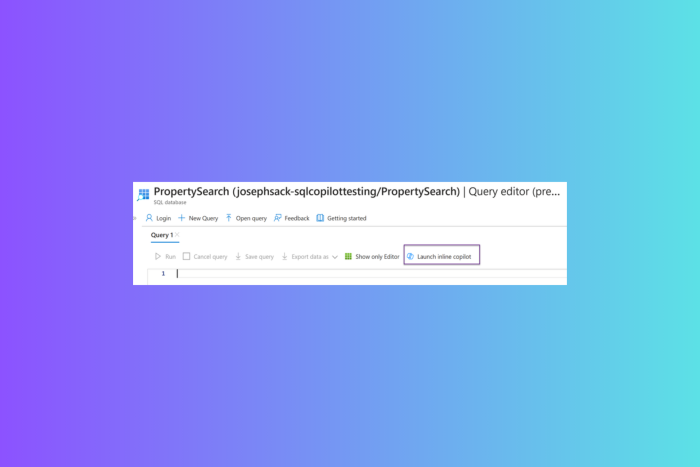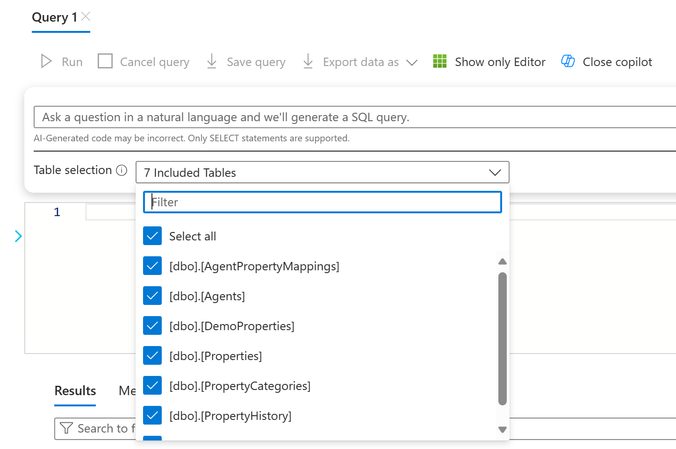Another Microsoft service, Azure SQL Database gets public preview of Copilot
You can access the feature using the Launch inline copilot button
3 min. read
Published on
Read our disclosure page to find out how can you help Windows Report sustain the editorial team. Read more

It looks like Microsoft is on a roll. It is announcing the integration of Copilot in its products and services back-to-back, this time in Azure SQL Database.
Recently, the company announced that Copilot in Azure SQL Database will be available in a limited public preview. This step aims to streamline the design, operation, optimization, and health of applications in Azure SQL Database.
This, in turn, provides natural language to SQL conversion and assists in database administration, enhancing productivity in the Azure portal.
Copilot in Azure SQL Database comes with two Azure portal experiences, as explained in the blog post:
- Natural language to SQL: This experience within the Azure portal query editor for Azure SQL Database translates natural language queries into SQL, making database interactions more intuitive.
- Azure Copilot integration: This experience adds Azure SQL Database skills into Microsoft Copilot for Azure, provides customers with self-guided assistance, and empowers them to manage their databases and solve issues independently.
Copilot in Azure SQL Database integrates data and formulates applicable responses using public documentation, database schema, dynamic management views, catalog views, and Azure supportability diagnostics.
Natural language to SQL
In the Azure portal query editor for Azure SQL Database, you can interact with your database using natural language. This means you can refer to the table and view names, column names, primary key, and foreign key metadata to generate T-SQL code. Then, you can review and execute the code suggestion.
To use natural language to SQL in Copilot in Azure SQL Database, click the Launch inline copilot button in the query editor toolbar.
Next, you can go to Table selection and choose an appropriate option.
Type in your question in the input box, then click the Generate Query button. You will get the T-SQL code statement; you can review it and then accept or decline the suggestion.
Once you accept the query, you can click Run to execute it.
Azure Copilot integration
This will enable you to ask and receive context-rich Azure SQL Database suggestions from Microsoft Copilot for Azure within the portal.
Currently, Copilot in Azure SQL Database is in public preview and limited to a few early adopters, and there is no information on when it will be available for the general public.
If you want to sign up for the program to access the feature early, go to the Request Access to Copilot in Azure SQL Database: Limited Access Public Preview page.
Will you be signing up to use Copilot in the Azure SQL Database? Share your thoughts with our readers in the comments section below.











User forum
0 messages